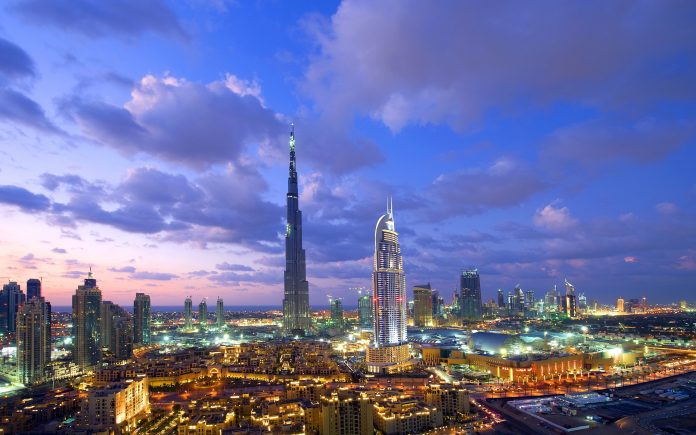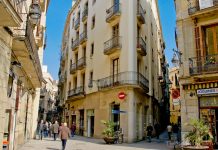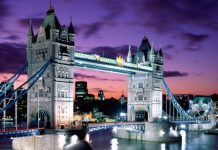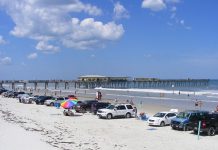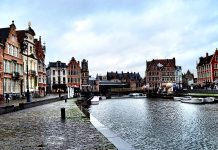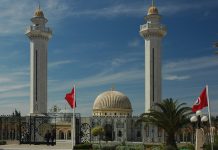Dubai is a large city based in the heart of the United Arab Emirates. It stands on the south-eastern shore of the Persian Gulf, and has the biggest population of the United Arab Emirates,
with more than 2.1 million people calling Dubai their home. Dubai is the second largest city in the country, covering 4,114KM. The largest city is the capital city, Abu Dhabi.
Dubai’s history can be traced back to as early as 1095AD, but the first recorded settlement in the area did not take place until 1799. The name Dubai was not coined until the early 19th century, when a sheikh persuaded 800 people from his tribe to follow him and make a settlement on the Dubai Creek. In 1971, the former Sheikhdom of Dubai, which was under the protection of the United Kingdom, declared independence and joined the United Arab Emirates. By this point Dubai was an important trading port, and was growing into a huge hub for culture and business.
Historically, the oil industry has been incredibly important for Dubai, but in recent years it has invested significantly in property, tourism and even financial services. The city is considered to be an important emerging market, and is becoming increasingly popular as a luxury tourism centre.
Getting to Dubai
Dubai International Airport is a major hub, and is one of the busiest airports in the world. There are more than 120 airlines serving the airport, and flights to more than 260 destinations are available. The Emirates Airline calls Dubai its home, and it serves more than 100 destinations.
In addition to flights, Dubai can be accessed via cruises. The first cruise terminal was established in Dubai in 2001, and there are cruises serving Singapore, Sydney, New York, Miami, Southampton, Barcelona and many other destinations.
Getting Around in Dubai
Dubai’s road system is quite modern, and there are many highways connecting Dubai to other major cities, as well as high quality main roads connecting smaller towns and villages. Cars drive on the right-hand side of the road in Dubai, and speed limits are clearly posted on all roads.
The main forms of public transport in Dubai are the abra, the metro and buses. An abra is a small ferry which takes travellers from one side of the creek to the other, and it is worth taking one at least once just for the experience. The bus network in Dubai is quite slow, but it is also incredibly inexpensive. The metro system in Dubai is relatively new. Metros run frequently during the day and are quite affordable.
Things to Do In Dubai
There are many things to do in Dubai. The most common reason to visit the city is for the luxury shopping experience, or one of the major festivals. However, the city has a fascinating culture, and there are a lot of sightseeing activities to enjoy.
Dubai is frequently referred to as the Middle East’s “shopping capital”. The city is full of “souk districts” where all kinds of goods can be bought and sold. Bartering is common in the souks. Over the last few years many modern shopping malls have sprung up. These tend to contain western-style supermarkets, department stores and electronics outlets, and tend to be less open to bartering. Whether you are looking for jewellery, electronics, or clothing, you will find what you are looking for in Dubai.
If you are not interested in shopping, there are lots of other things to see and do in Dubai. One of the most spectacular sights is Dubai’s Miracle Garden, which is the world’s biggest natural flower garden, containing more than 45 million flowers. Other interesting sights include the fantasy tower, and the Burj Al Arab.
The Fantasy Tower
The Fantasy Tower, or Burj Khalifa, is the tallest structure in the world. It stands half a mile high, and is an incredible structure to behold. Visitors can take a ride to the observatory, which is on the 124th floor, or head to the At.mosphere Restaurant, which is on the 122nd floor, and enjoys the honour of being the highest restaurant in the world. The Burj Khalifa is a true testament to the ambition of the people of Dubai.
Burj Al Arab
Before the Burj Khalifa existed, the Burj Al Arab was the most noteworthy building in Dubai, and while it is not as tall, imposing or spectacular as the Burj Khalifa, it is still well worth a visit. The Burj Al Arab is a beautiful white building that stands on a man-made island. The building was designed by Tom Wright, a British architect, and was built so that the structure resembles the sails of a traditional boat called the Arabian Dhow. The Burj Al Arab is one of the only hotels in the world to have a seven-star rating, and while few tourists can afford the prices of the hotel itself, visitors do have the option of dining in one of the hotel’s many eateries, or visiting Sahn Eddar for afternoon tea.
The Dubai Museum
If you would like to learn more about the history of Dubai, and soak up some of its culture, a visit to the Dubai Museum is well worth a trip. The museum aims to show off the traditional way of life of Dubai’s people, and features a range of antiquities and artefacts from various periods in Dubai’s history. The museum traces the history of Dubai from 3,000 BC until the modern day, and shows how the city has changed since the discovery of oil in the area in the 1960s.
After visiting the museum, why not explore the streets of the city and try dining at some of the local eateries? Every traveller should sample true local cuisine at least once, and Dubai has several “must eat” foods. Tasty traditional dishes include stuffed camel, al harees (an exotic, salty dish made of wheat and meat), shawarma (a lamb or chicken dish similar to a kebab), and hummus (suitable for vegetarians). This brief resume highlights how wonderful a place Dubai is for the traveller to visit.

